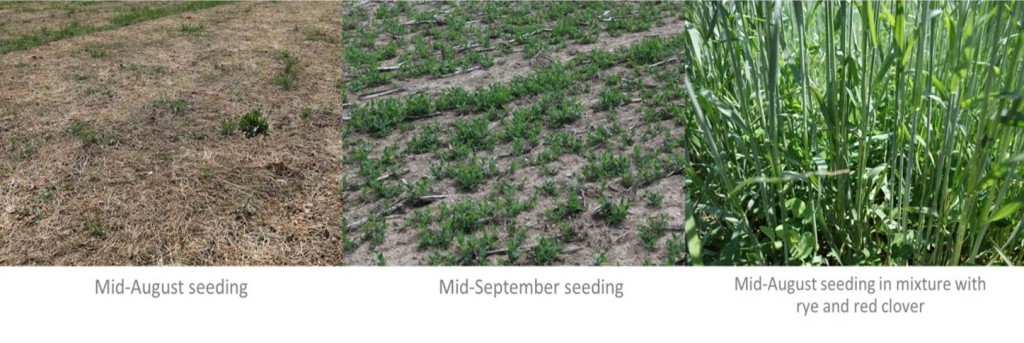Selecting, seeding, and managing cover crop mixtures is the topic of a new factsheet from eOrganic written by our colleagues at Penn State. I had a chance to talk with Charlie White recently about their project and I’ll be sharing his thoughts on an episode of the podcast later this year. If you want the full run-down of their work, however, this factsheet is a must-read.
When I visited Charlie, there was a great example of how cover crops behave differently in monoculture vs. mixtures. The Austrian winter pea they seeded in monoculture in mid-August winterkilled because it had reached the tender state of flowering, whereas the Austrian winterpea in a mixture, seeded on the same date, overwintered. Its growth stage was more like a mid-September seeding of the monoculture, and was more hardy.

Overwintering of Austrian winter pea is affected by seeding date and whether it is by itself or in a mixture. These photos are from early May in Pennsylvania.
This is only one example of the ways cover crops, when grown in mixtures, can interact with each other. Whether overwintering is a desirable trait depends on the goals of your system, and determining your goals along with the time period during which you can grow a cover crop is the first step to creating an optimal mixture. An ideal cover crop mixture will harness the best traits of individual cover crops and result in diverse benefits. A less-than-ideal mixture may end up being dominated by one species or may lead to too much competition between species such that none performs at its best.
The factsheet provides examples of mixtures farmers have used, traits of different cover crops, and insights into the logistical aspects of dealing with multiple kinds of seed.



